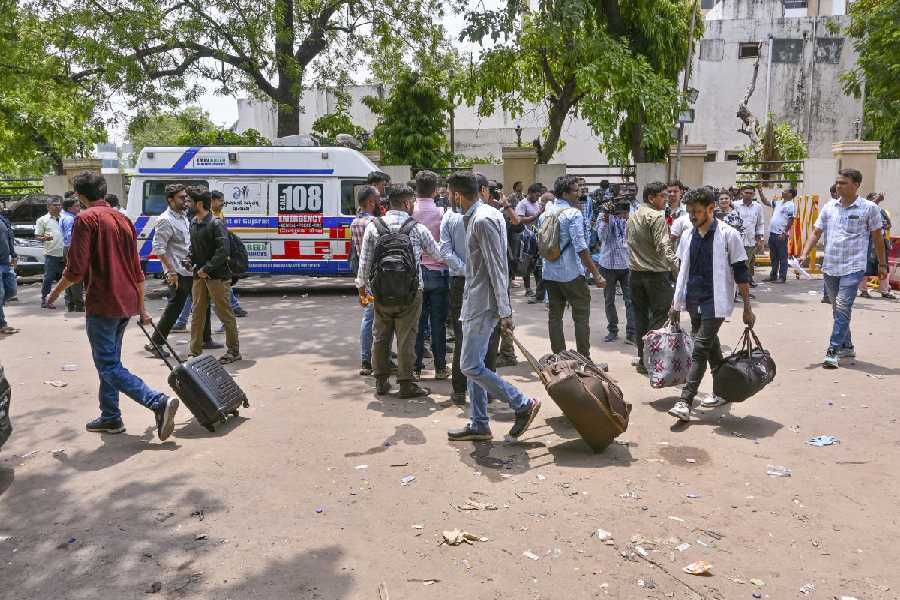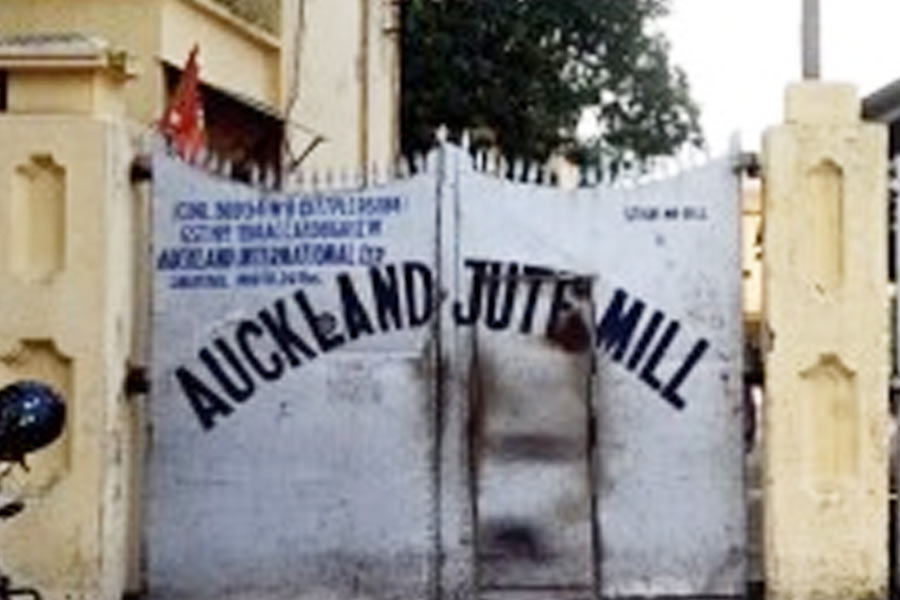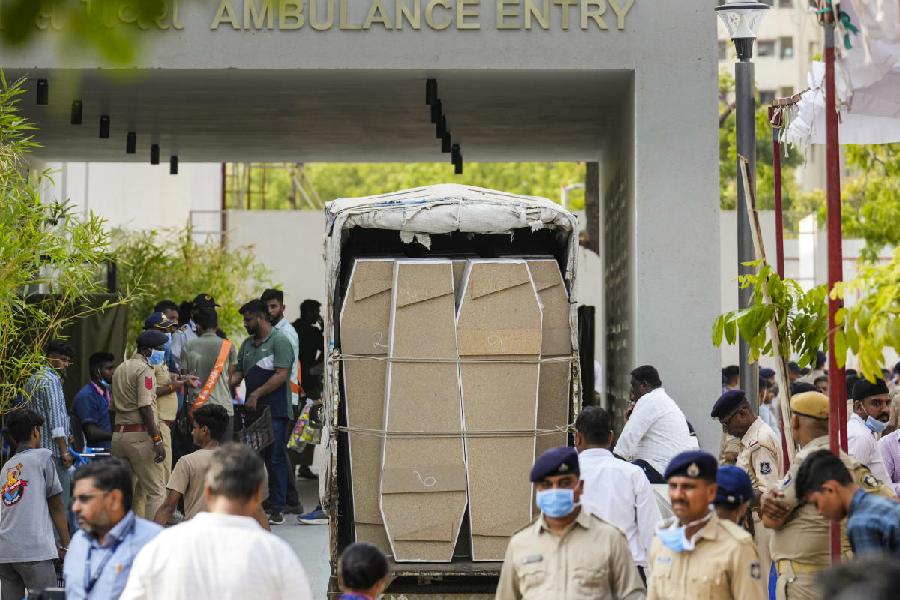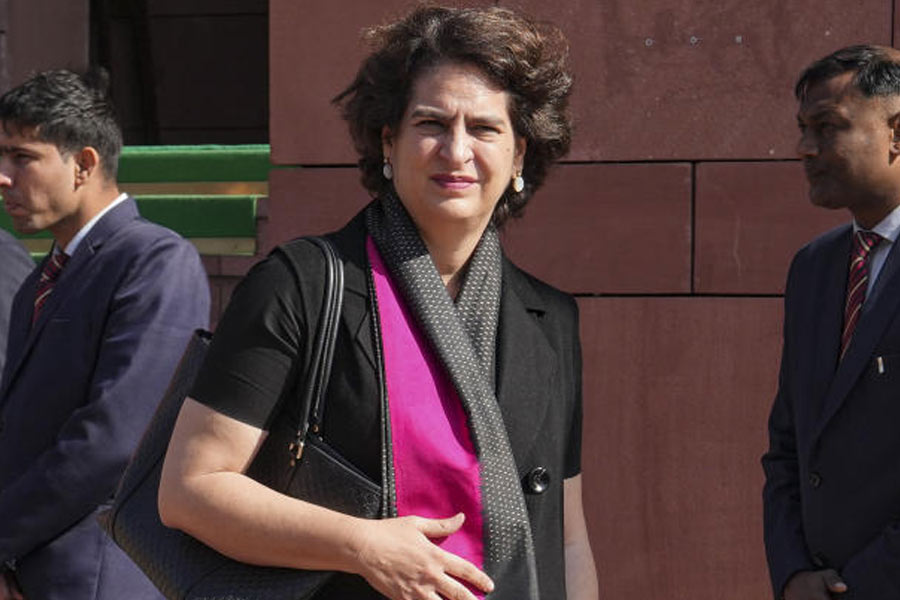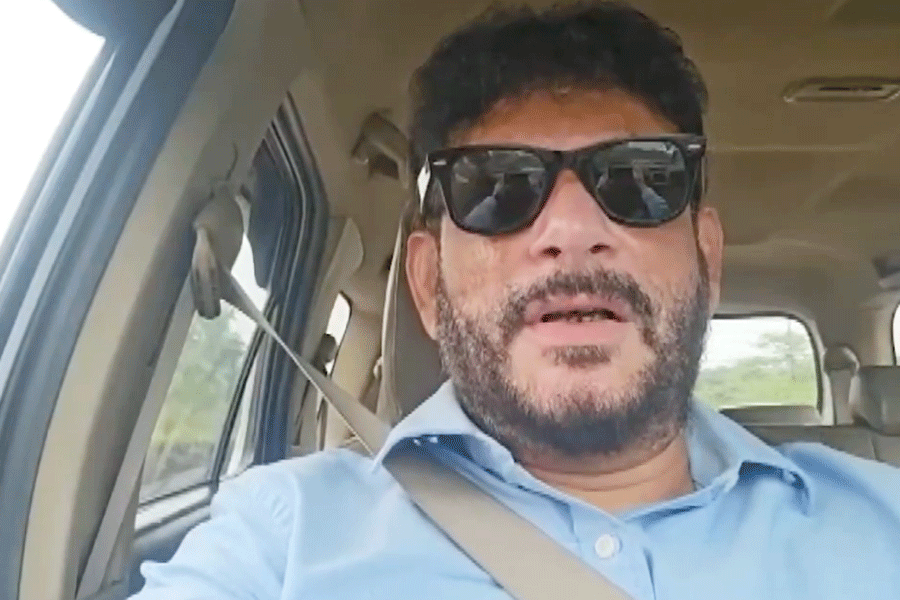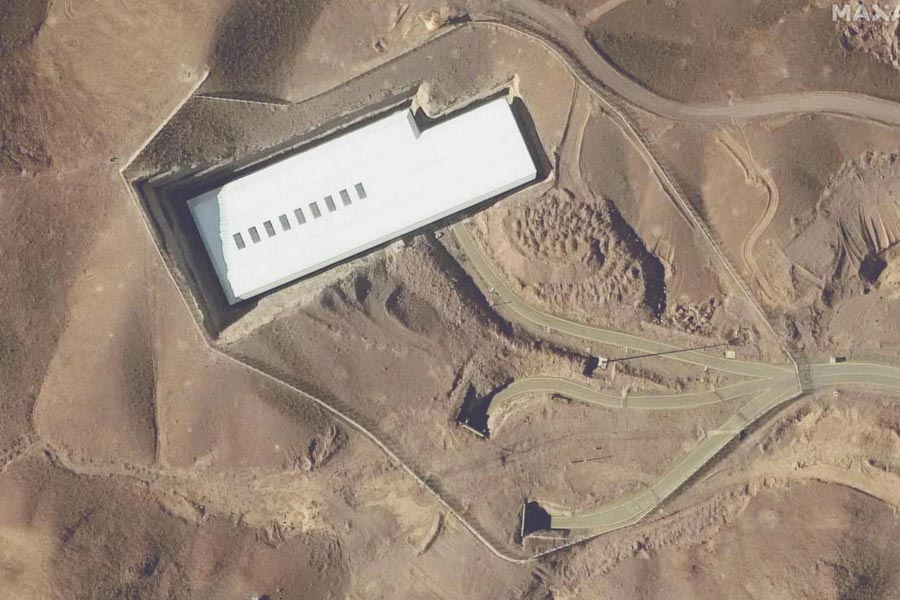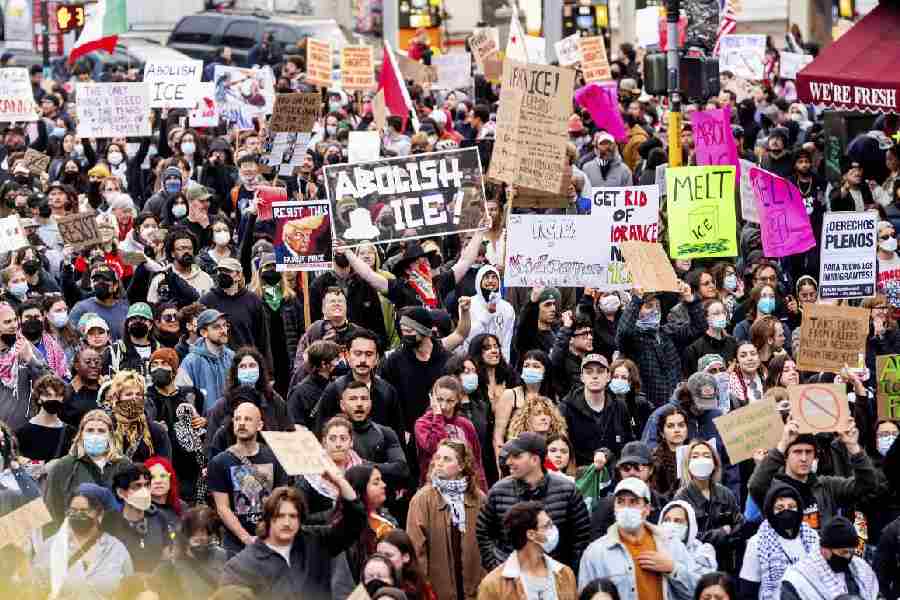New Delhi, Feb. 28 :
New Delhi, Feb. 28:
Surcharge Sinha strikes
From Guwahati to Godhra, from Kashmir to Kanyakumari, the ISI has struck at will across the length and breadth of the country. It attacked Parliament, too.
Today, it infiltrated into the budget.
Yashwant Sinha introduced a 5 per cent national security surcharge that - patriotic or not - every tax-paying citizen has no choice but to fork out, except those with a total income below Rs 60,000.
The finance minister withdrew the 2 per cent quake surcharge he had imposed in the last budget, but decided to take 3 per cent more with his ISI tax because 'national security is an overriding concern'. The day after the incident in Gujarat, which the government is blaming on the ubiquitous ISI, no one can question that concern. Hence, pay up.
And blame it on the ISI.
The finance minister squeezed the knife into the system to gouge out Rs 12,700 crore in fresh levies, Rs 2,750 crore through the ISI tax alone. He is collecting Rs 6,700 crore from excise increases and Rs 3,250 crore by slashing income-tax rebates. After a Rs 2,200 crore revenue loss through customs duty cuts, net additional revenue will be Rs 10,500 crore.
Indian industry is unhappy with the budget because it thinks its overriding concern of stimulating growth has not been addressed. 'This budget is unlikely to boost growth rates. It may, at best, sustain the current rates. I would call it an achievable, deliverable budget,' said CII president Sanjiv Goenka.
The stock market pounced on Sinha with its customary cruelty. The Bombay Stock Exchange sensitive index ended the day at 3562.31 points, which meant a loss of 143.35, knocking Rs 27,000 crore off investor wealth.
Politically, too, the budget may be fraught with dangers if the response of BJP ally Telugu Desam was an indication. Attacking the fresh taxes, N. Chandrababu Naidu said: 'We are totally opposing these proposals.'
Apart from the 5 per cent surcharge, Sinha extended service tax to more areas, cut the interest rate on small savings, rolled back tax rebates, shifted the 10 per cent tax on dividend earnings on to the recipient and raised prices of cooking gas, kerosene, sugar and fertilisers. Petrol and diesel will cost less.
Defending the ISI surcharge, Sinha said: 'I have to find the money somewhere given the difficult fiscal situation. I can't produce it out of the blue. We must remember the difficult situation on the borders.'
The situation on the borders has not led to any great increase in the defence outlay, which has gone up by only Rs 3,000 crore to Rs 65,000 crore, barely taking care of inflation. But Sinha gave colleague George Fernandes a blank cheque that he will come up with the extra dash of cash whenever needed.
Although squeals of joy could not be heard above the dead weight of negative sentiment, there were middle-roaders who advised a realistic assessment. 'The market expects too much sometimes,' said HSBC India's CEO Zarir Cama.
The trouble with the budget - as some of its critics saw it -is its lack of ambition. Last year, Sinha had begun by being too ambitious and ended in anguish. 'You cannot have grand plans year after year. It was there in the last budget,' Sinha said.
He listed consolidation of reforms, partnership with states in fiscal reforms and privatisation as key features of the budget.
In continuation of the policy of freeing up the market for agricultural products - kisan ki azaadi, according to the finance minister - Sinha announced a series of steps, along with higher spending on rural roads and stimulants to electrification and employment.
He asked states to open up agriculture markets if they wished to get additional allocations for Centre-sponsored schemes and spoke of linking urban development funds with reforming land ceiling laws and levying higher municipal charges.
For infrastructure development, he set as a primary condition imposition of reasonable user charges. In power, he came up with more money under a scheme in which state electricity boards can clean up their balance sheets by eliminating the gap between cost and price.
Taking state-level fiscal reforms further, he announced an allocation of Rs 2,500 crore to encourage policy changes to remove constraints on growth.
Sinha has stepped up public investment in infrastructure sharply. For power, the plan outlay is rising by 22 per cent, for roads and national highways by 39 per cent and for railways by 23 per cent. All this will add up to Rs 37,919 crore. Similarly, budget support for Central, state and Union Territory plans has been increased by over 19 per cent, the highest rise in over a decade.
A Bollywood aficionado, Sinha offered more 'khushi' and less 'gham' to the entertainment industry, introducing sops for multiplexes.
But industry as a whole, ready for a little gham if mixed with some khushi, got what it did not want: lagaan.
 Saturday, 14 June 2025
Saturday, 14 June 2025

